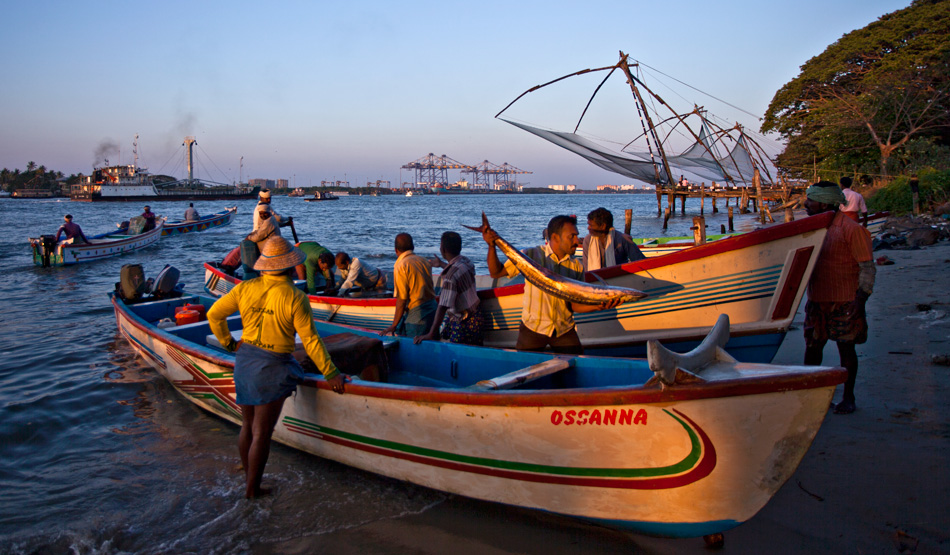During my visit to Fort Kochi last month, I stayed in 16th and 17th century bungalows that also hosted the likes of Vasco da Gama, governers of Portugese and Dutch administration, a French Admiral and a British Major.
About a month ago, universe conspired that I should take a holiday in Fort Kochi. I had scheduled a work-related visit to Cochin and my air tickets were all booked. Just as the dates approached–I still hadn’t planned my accommodation–I was invited by Neemrana to visit and experience their two non-hotel hotels in Fort Kochi. And two days before departure, all my work commitments in Kochi were cancelled, enabling me to enjoy an undisturbed beach-side holiday.
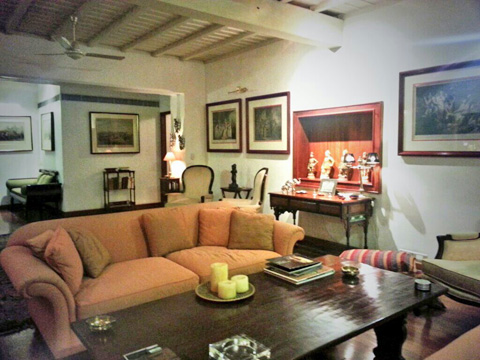
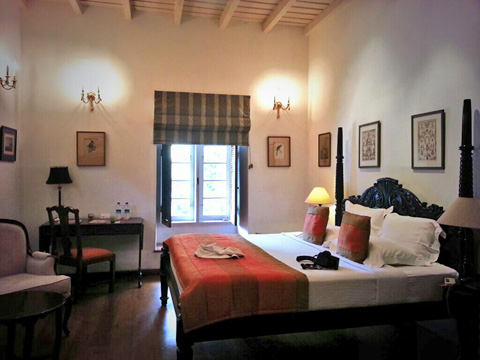
My first day at Fort Kochi was spent at Le Colonial, a 16th century bungalow that has witnessed much of Kochi’s recorded history. It was established as the governor’s residence when the then small fishing village was gifted by Raja of Kochi to the Portuguese. It continued to serve the same purpose more than a century later, even after the area came under Dutch control . Fort Kochi changed hands again and came under British rule another one-and-a-half centuries later, in the last decade of 18th century, and remained in their hands until the day of independence.
Now a boutique hotel since it last changed hands into Neemrana, Le Colonial has just seven rooms carefully decorated to reflect the days of it’s past. The rooms aren’t numbered, but named after personalities associated with the building. My room was named after Mahe de la Bourdonnais, who happened to spend a night here on his way from Pondicherry to Mahe.
Fort Kochi’s sea-face is more known for its Chinese Fishing Nets. But there is plenty of activity that goes on regularly around these nets. On the beach next to it, you usually sea fishermen throwing nets, standing on the shore. And near the the ferry station next to nets, motor-boats arrive with their catch of king-fish and squids that gets auctioned to a small gathering of buyers. The king-fish that this fisherman was holding was sold at Rs.800/kg.
A long row of Chinese fishing nets are an iconic landmark of Fort Kochi’s sea front. Every evening, small groups of fishermen standing on thick, long dead tree trunks of this curious contraption are seen pulling a bunch of ropes that gently lifts the half-immersed nets, bringing out a handful of fish that seem too small for the size of the net. In the winter months, when plenty of tourists trot the shore in search of amusement, the fish are sold almost as soon as they are lifted. A bunch of restaurants that shout out ‘you buy the fish, we cook it,’ make up all the market required for the little bounty secured from the nets. One summer evening, I walked into one of the very few nets that was functioning even when the tourists were away, and spent an hour taking pictures and talking to ‘P Samuel’ who was happy to show me around. Some images from the visit.

A ship moves towards Cochin Harbour on the shore opposing the Chinese fishing nets.

The nets are pushed into the water when some one walks on the mast and increases the weight on the far end of the assembly that stretches into the water. To bring the net back up, four to five people pull a bunch of ropes attached to the mast, in a way similar to drawing waters from the well using a pulley.
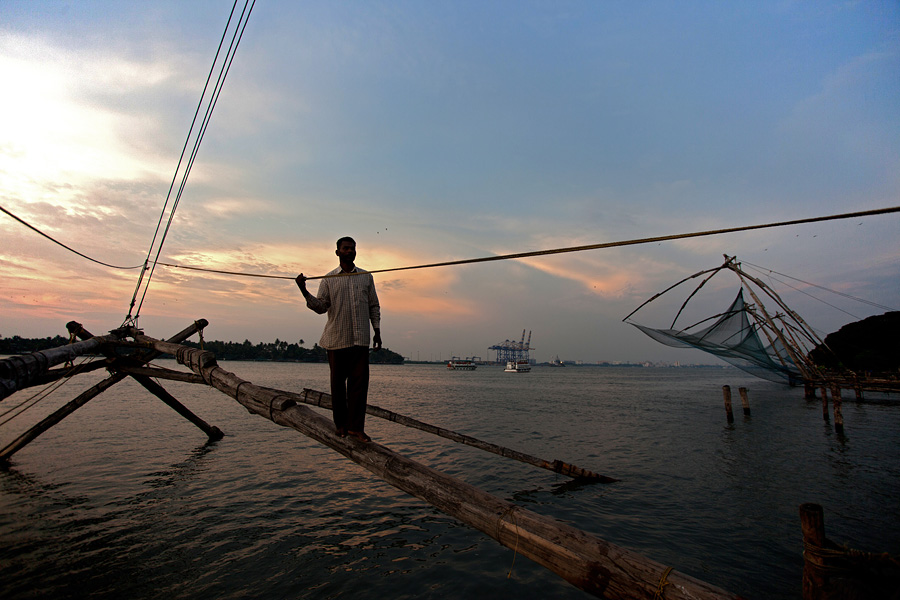
One of the fishermen in the group walks up the pole to push it down the water and returns after the job is done.
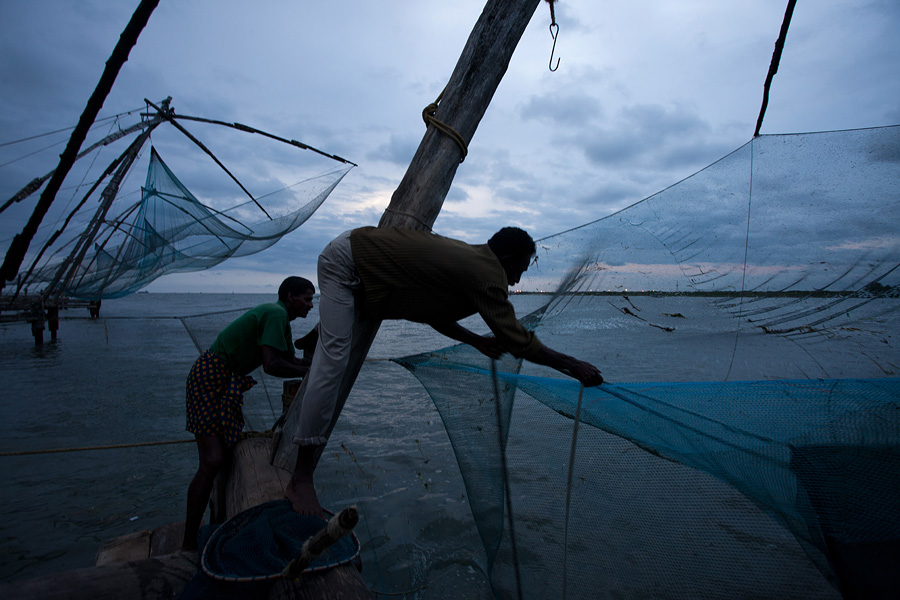
Pulling the booty of fish after lifting the nets. The net is usually kept immersed for a duration of ten to fifteen minutes. During the summer months when I was there, an immersion typically brought back a haul of one to two kilos of fish.
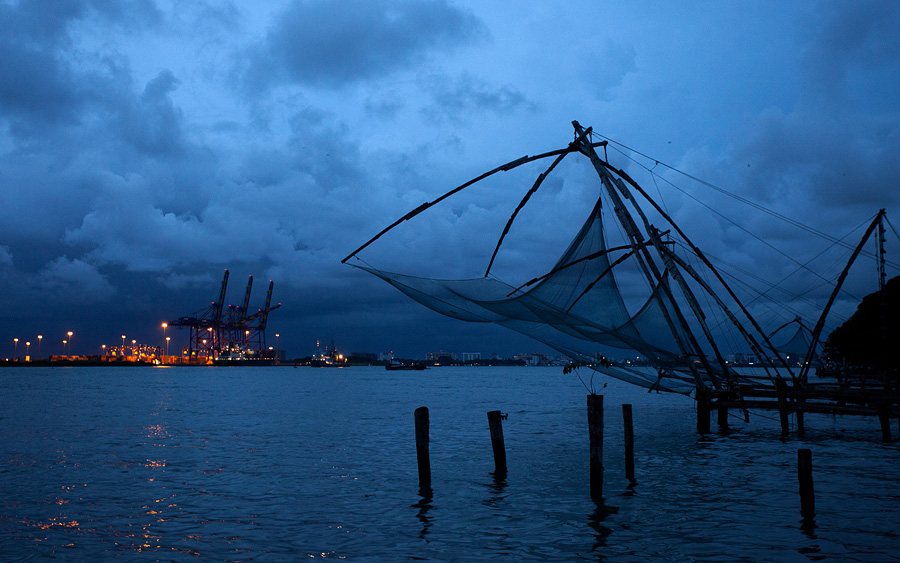
The lights of Kochi Harbour on the faraway shore come on after sunset.
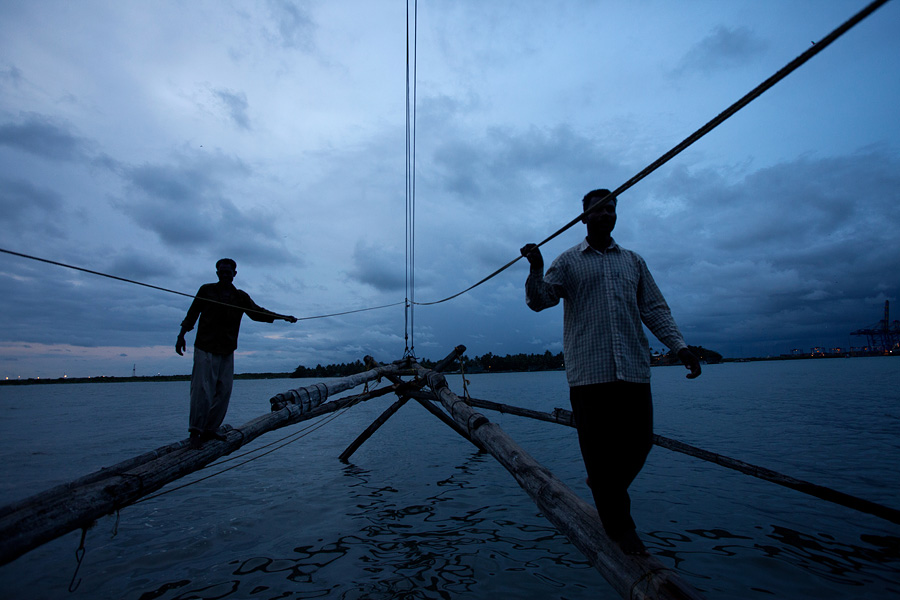
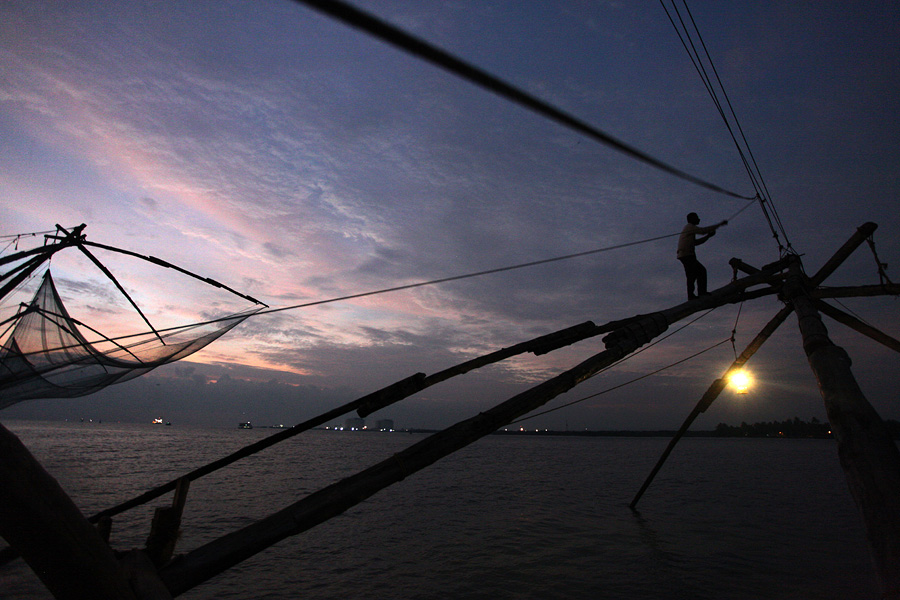
Some time after the sunset, fishermen light a lantern that hangs over the water and attracts more fish. The colourful skies, the lights from the other shore and the bright lamp hung with a rope suddenly transform the atmospehere around the nets.
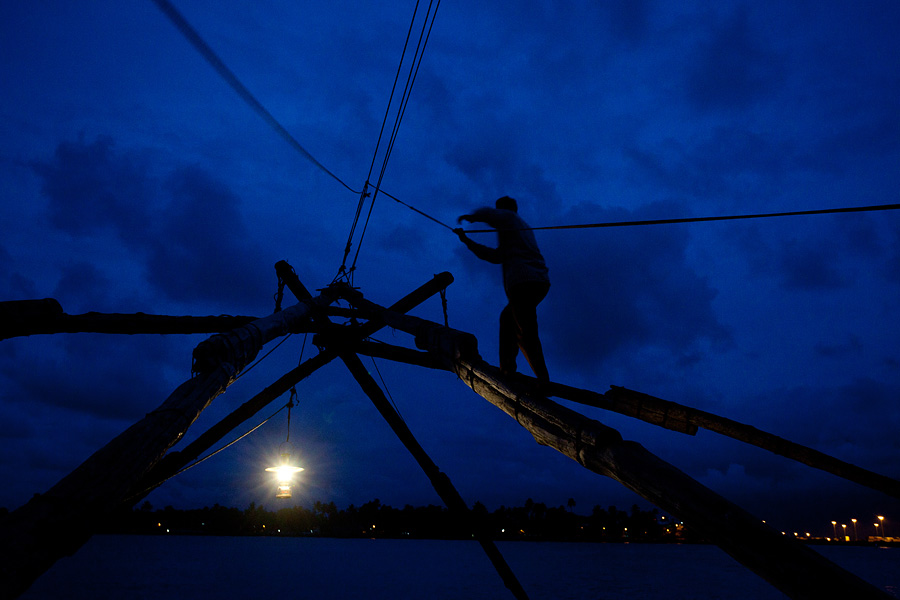
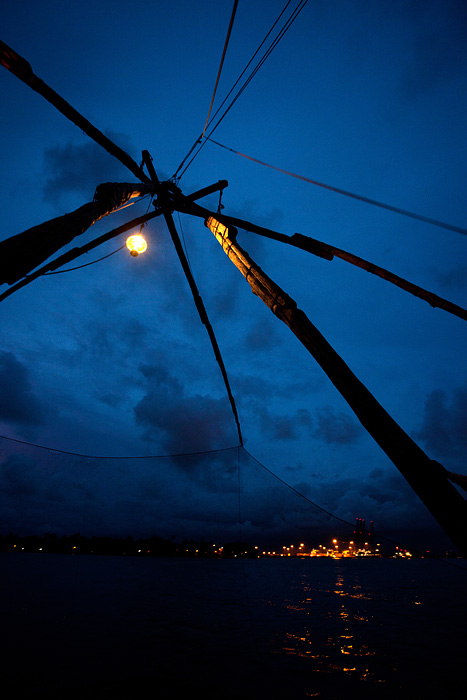
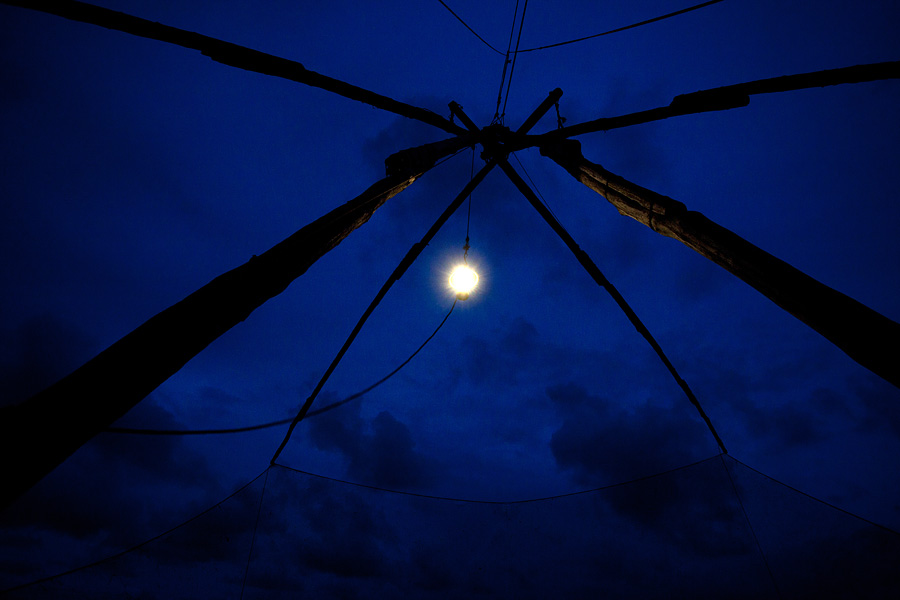
The colours change quickly after sunset, into a deep hue of blue on cloudy days or into deep orange colours in the clear days of winter months.


